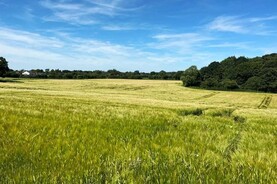Data from the grass measuring software Pasturebase, which is operated by Teagasc is suggesting that almost half of all farmers that measured grass last week had a cover per cow of less than 150kg DM.
This is below the target range of 180kg DM/cow and is a reflection of lower than normal grass growth rates over the last couple of weeks.
I’ve been saying it for weeks now that grass growth is going to take off, and it is, but it just hasn’t happened yet.
Between taking paddocks out for silage and reseeding the daily demand for grass on most farms is around 60kg/day, even with a couple of kilos of meal in the diet.
Instead of what normally happens at this time of year when farms grow in excess of 60kg/ha/day, growth rate has been lower than 60kg on average.
This means that more grass is being eaten on farms than is being grown so average farm cover or the cover of grass available per animal decreases.
Risk
The risk is that if this goes too low the farm will go into a downward spiral with short rotation lengths and very low pre-grazing yields.
It’s difficult to get out of that without putting in a lot of supplement or getting very high grass growth rates to compensate.
While temperatures were high last week, they are set to drop a bit for the coming week and there is more rain due also.
With low pre-grazing yields and potentially hungry cows going into paddocks with high clover contents farmers need to be wary of the risks of bloat. This could happen if cows forge themselves on short and lush grass and clover.
Fibre
Adding some fibre to the diet will help to prevent bloat from occurring. So if short of grass consider feeding silage as a supplement alongside meal.
The objective when feeding supplements because grass is tight is to slow down the rotation length and give other paddocks a chance to recover.
To achieve this and get the most value from supplements, the strip wire should be back up and cows allocated the correct area based on the amount of supplement going in.
For example, if a herd is being fed 6kg of supplement, then they should be allocated around 13kg of grass per day or 6.5kg per grazing.
As soon as pre-grazing yield and average farm cover is back on track the supplement and the strip wires can be removed.






 This is a subscriber-only article
This is a subscriber-only article










SHARING OPTIONS: